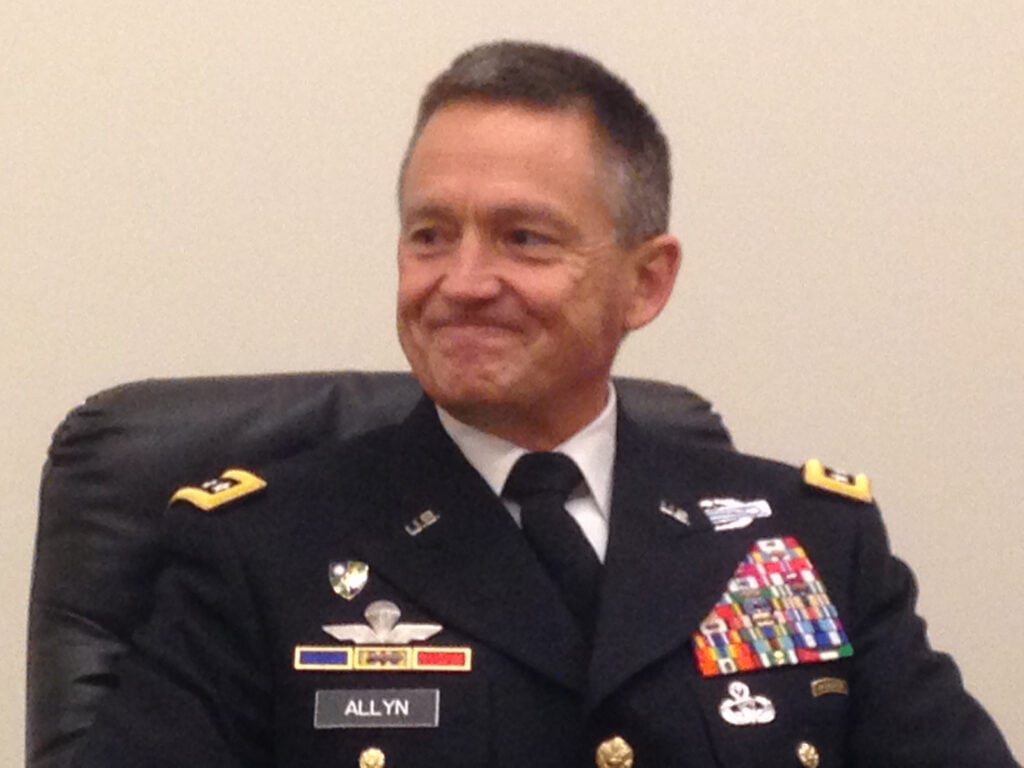Army Vice Chief Allyn Lists Service’s Robotic Priorities
Posted on

Gen. Daniel Allyn, Army Vice-Chief of Staff
AUVSI: Future warfare will “place a premium on all types of unmanned systems,” the Army’s vice chief of staff said Wednesday, and Gen. Daniel Allyn told the Association of Unmanned Vehicle Systems International his service has five priority objectives for them.
“First, these systems must increase our situational awareness, going where manned systems cannot, thereby increasing standoff capability and agility for our soldiers and our units,” Allyn said. For that reason, he said, in fiscal 2018 the Army will begin fielding improved General Atomics MQ-1C Gray Eagle drones, which carry sensors and four AGM-114 Hellfire missiles.
Today, the Gray Eagle can stay over a target area eight hours at a range of 725 miles from its base, Allyn said. The Improved Gray Eagle, he said, will have “great payload capacity and near triple the range of our existing systems.
Secondly, future unmanned systems for the Army “must lighten soldiers’ physical and cognitive load.” For that reason, he said, the Army is working hard on the Squad Multipurpose Equipment Transport, a ground robotic vehicle designed to carry a squad’s worth of life support and combat gear (and which got mixed reviews in a recent exercise). The Army is also eager to have a common ground control station for its Gray Eagles and RQ-7 Shadow drones, he added.
“Third, future unmanned systems must help sustain the force with increased distribution, throughput and efficiency,” Allyn said. “One of our major efforts in this regard is the Leader-Follower capability,” he said, referring to a program to develop convoys consisting of four driverless trucks led by one manned by a crew of two. Allyn said the Leader Follower system is set to go into production in 2024.
Fourth, he said, “Future unmanned systems must facilitate movement and maneuver.” The Army is tackling that goal, he said, by seeking “scalable control,” which would allow drone operators and recovery teams to transfer control of their aircraft to troops in the field so they can control them during operations. “Likewise,” he said, “we are pursuing the Common Robotic System –Individual, a man-portable, minature and highly mobile unmanned system, capable of providing dismounted forces with ground-based surveillance and reconnaissance, chemical, biological, radiological and nuclear detection, and explosive ordnance disposal capabilities.”
Fifth, Allyn said, “Future unmanned systems must help protect the force.” They already do, he said, but robots of the future need to be able to find deeply buried IEDs and detect other threats.
Allyn began his speech noting that, while the Army had only 45 drones when the war in Afghanistan began in 2001, today the service flies about 8,000, from the hand-launched to the Gray Eagle. “They are literally woven into the fabric” of today’s Army he said, and leaders “cannot imagine operating without them.”
Subscribe to our newsletter
Promotions, new products and sales. Directly to your inbox.
